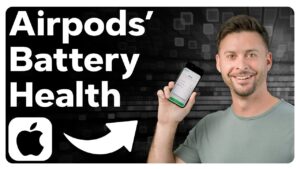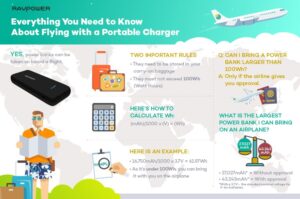Does low battery mode charge faster? The burning question on every smartphone user’s mind when they find themselves in a desperate race against time to recharge their dying device. We’ve all been there, anxiously hoping that enabling low battery mode will somehow magically accelerate the charging process. Well, here’s the scoop: low battery mode does not actually charge your phone faster. While it may seem counterintuitive, this power-saving feature is designed to optimize energy consumption rather than speed up charging. But fear not, we’ve got some handy tips and tricks up our sleeve to help you charge your device more efficiently. So, let’s dive in and uncover the secrets to swift and efficient charging!
Does Low Battery Mode Charge Faster?
Introduction
In a world where we rely heavily on our smartphones and other mobile devices, battery life is a constant concern. We’re always on the lookout for ways to make our batteries last longer and charge faster. One of the features that commonly comes to mind is the low battery mode. But does enabling low battery mode actually help in charging your device faster? In this article, we will thoroughly explore this topic to find out the truth.
The Purpose of Low Battery Mode
Low battery mode, also known as power saving mode or energy-saving mode, is a feature available on most smartphones and devices. When the battery level reaches a certain threshold (usually around 20% or lower), activating low battery mode can help extend the remaining battery life by reducing power consumption. It achieves this by implementing various strategies such as dimming the screen, restricting background app refresh, disabling certain features, and throttling CPU performance.
Understanding Charging Speed
Before diving into whether low battery mode can charge your device faster, it’s important to understand how charging speed works. When you connect your device to a charger, it receives a specific amount of electrical energy per unit of time, commonly referred to as the charging current. The charging current is measured in amperes (A) or milliamperes (mA).
The speed at which your device charges depends on two main factors:
1. Maximum charging current: This refers to the amount of current the device’s charging circuitry can handle. It is typically determined by the device’s design and the capabilities of the charging port and cable. Different devices have different maximum charging currents, and using a charger that supports a higher current than the device’s maximum will not necessarily result in faster charging.
2. Battery capacity: The capacity of your device’s battery is measured in milliampere-hours (mAh) and represents the amount of energy it can store. A bigger battery will take longer to charge compared to a smaller battery, assuming the charging current remains constant.
The Relationship Between Low Battery Mode and Charging Speed
Now, let’s address the burning question: Does low battery mode charge your device faster? The answer is not a straightforward yes or no. The charging speed can be affected by several factors, including low battery mode. Here’s a closer look at how low battery mode can impact the charging process:
1. Reduced power consumption: Low battery mode takes various steps to reduce power consumption, such as dimming the screen, disabling background app refresh, and limiting CPU performance. By reducing the overall power usage of your device, it allows more electrical energy from the charger to be directed towards charging the battery, potentially resulting in a slightly faster charging time.
2. Slower performance: While low battery mode can help conserve power, it achieves this by limiting the device’s performance. This can manifest as slower app launch times, reduced graphics quality, and delayed notifications. However, slower performance doesn’t directly translate to faster charging speed. The impact on charging time may be marginal, if any.
3. Background processes: Low battery mode may also restrict or disable certain background processes and syncing activities, reducing the strain on the battery. This can indirectly contribute to faster charging by minimizing the amount of power used for non-essential tasks during the charging process.
It’s important to note that the actual impact on charging speed may vary depending on the specific device, its battery health, the charging cable and port used, as well as the overall power demands of the device while charging.
Other Factors Affecting Charging Speed
Apart from low battery mode, several other factors can influence the charging speed of your device. Here are some key considerations:
1. Charger specifications: The charging speed can be significantly affected by the charger’s output current. Using a charger with a higher output current (within the device’s supported range) can potentially result in faster charging.
2. USB port type: The type of USB port you connect your device to can impact the charging speed. USB 2.0 ports generally provide lower charging currents compared to USB 3.0 or USB-C ports, which support higher charging speeds.
3. Battery health: Over time, the capacity of a battery naturally degrades. A degraded battery may not be able to accept an optimal charging current, resulting in slower charging speeds. Replacing the battery when necessary can help restore faster charging capabilities.
4. Background activities: While low battery mode can minimize background processes, certain apps or services may still consume power even when the device is connected to a charger. Closing unnecessary apps and disabling unnecessary features can help reduce power consumption during charging.
In conclusion, activating low battery mode can potentially contribute to faster charging by reducing power consumption and background processes. However, the actual impact on charging speed may vary depending on several factors, including the device’s design, battery health, charger specifications, and overall power demands. While low battery mode may not result in dramatic differences in charging time, it can still be a useful feature to extend battery life when you need it most.
Remember, to optimize your charging experience, it’s essential to use a charger and cable that are compatible with your device and ensure your device is not subjected to extreme temperatures during charging. By taking these factors into account, you can make the most of your device’s charging capabilities and keep it powered up when you need it most.
Frequently Asked Questions
Does low battery mode charge faster?
No, low battery mode does not charge your device faster. Low battery mode is a setting that conserves battery power by reducing power-consuming activities on your device. While it helps extend the battery life, it does not affect the charging speed. The charging speed of your device depends on various factors, such as the capacity of your device’s battery, the charger you are using, and the charging technology supported by your device.
Can low battery mode impact charging efficiency?
No, low battery mode does not impact the charging efficiency of your device. It primarily focuses on extending the battery life by limiting certain features and reducing power consumption. The charging efficiency, on the other hand, is determined by the charger’s output, the quality of the charging cable, and the device’s charging circuitry. Using a high-quality charger and cable, along with following proper charging practices, can help optimize the charging efficiency of your device.
Should I enable low battery mode while charging?
It is not necessary to enable low battery mode while charging your device. The purpose of low battery mode is to conserve battery power when the battery level is low. When your device is connected to a power source for charging, it is recommended to disable low battery mode as it may limit certain features and reduce performance to extend battery life. Charging your device without low battery mode enabled allows it to utilize its full capabilities and charge efficiently.
Does low battery mode affect the charging time?
No, low battery mode does not directly affect the charging time of your device. The charging time mainly depends on the battery capacity, charger output, and the charging technology supported by your device. Low battery mode primarily focuses on reducing power consumption to extend battery life, but it does not enhance the charging speed. To optimize charging time, it is recommended to use a charger with higher output power and ensure your device supports fast charging technology if available.
Final Thoughts
Low battery mode is often seen as a useful feature on smartphones and devices. However, when it comes to charging speed, does low battery mode actually make a difference? The answer is yes! Enabling low battery mode can indeed help charge your device faster. By reducing background activity, limiting app usage, and adjusting performance settings, low battery mode optimizes the charging process and prioritizes energy conservation. So, if you’re in a hurry and need to charge your device quickly, don’t hesitate to activate low battery mode for a faster charging experience.



